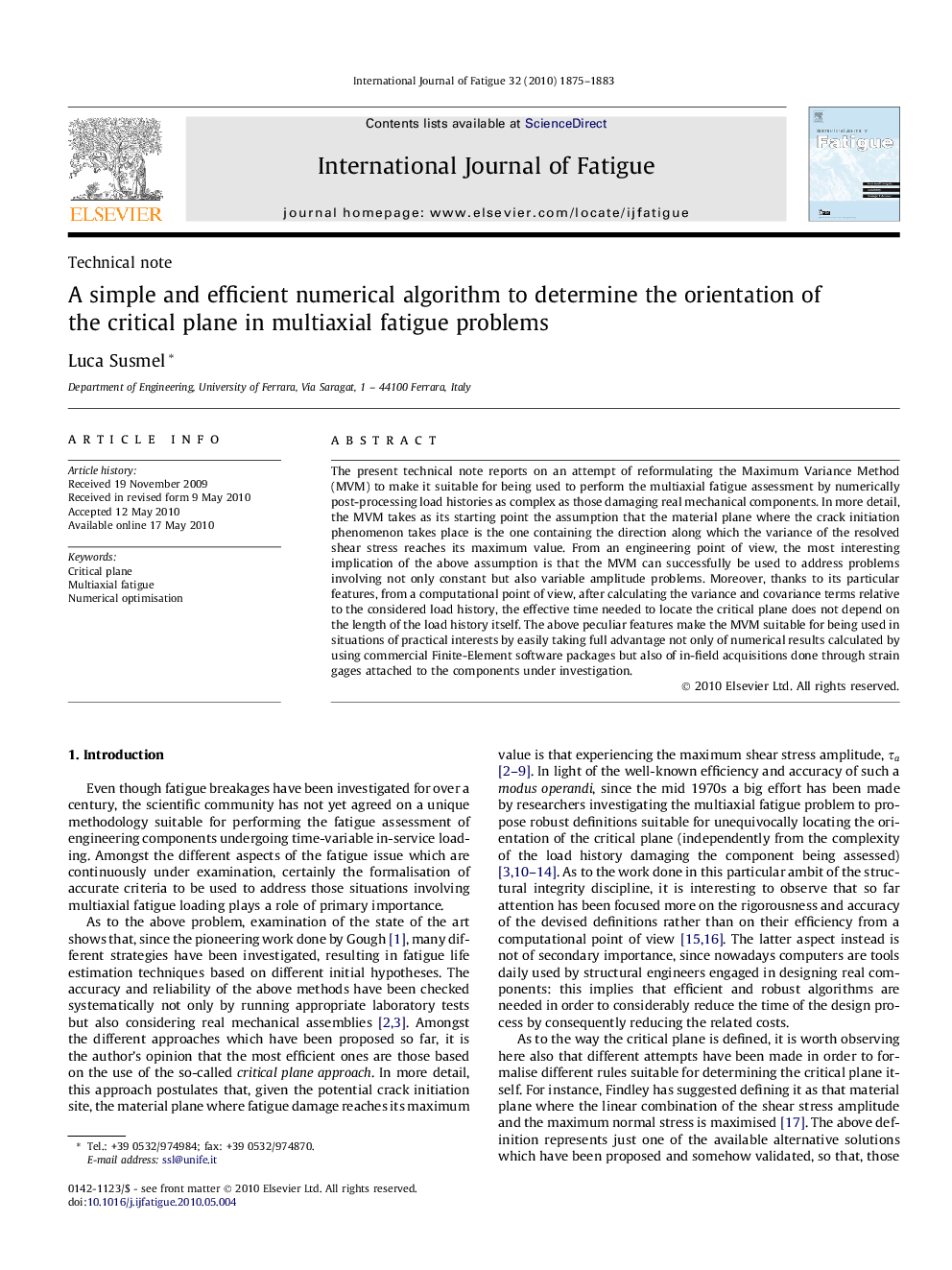| Article ID | Journal | Published Year | Pages | File Type |
|---|---|---|---|---|
| 781247 | International Journal of Fatigue | 2010 | 9 Pages |
The present technical note reports on an attempt of reformulating the Maximum Variance Method (MVM) to make it suitable for being used to perform the multiaxial fatigue assessment by numerically post-processing load histories as complex as those damaging real mechanical components. In more detail, the MVM takes as its starting point the assumption that the material plane where the crack initiation phenomenon takes place is the one containing the direction along which the variance of the resolved shear stress reaches its maximum value. From an engineering point of view, the most interesting implication of the above assumption is that the MVM can successfully be used to address problems involving not only constant but also variable amplitude problems. Moreover, thanks to its particular features, from a computational point of view, after calculating the variance and covariance terms relative to the considered load history, the effective time needed to locate the critical plane does not depend on the length of the load history itself. The above peculiar features make the MVM suitable for being used in situations of practical interests by easily taking full advantage not only of numerical results calculated by using commercial Finite-Element software packages but also of in-field acquisitions done through strain gages attached to the components under investigation.
